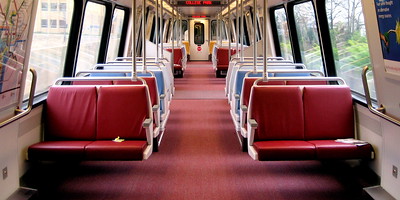For immediate release
May 14, 2020
Contact: Stewart Schwartz | 703-599-6437 (cell)
Cheryl Cort | 202-251-7516 (cell)
A call to action for sustainable and equitable communities in the wake of COVID-19
The COVID-19 crisis has exposed long-standing inequities and highlights the need and opportunities for fundamental reforms. The saying, “never waste a crisis,” is true and we urge our elected officials, government staff – all of us — to work together and take-action now to address the following 10 priorities:
1) Provide living wages and health protection for essential workers – people who work in public safety, health care, transit, grocery stores and the food supply network, pharmacies, trash collection, teachers, day care and elder care, and a range of other occupations are our essential workers, and should be paid a living wage and provided the health protection and security they need.
2) Provide affordable housing and a real economic safety net – far too many people live day-to-day with no margin of safety and need a living wage and rental assistance; affordable, clean, and secure homes; health care; day care; affordable transit; and the opportunity to save and climb the economic ladder.
3) Provide equitable access to health care and healthy environments – far too many people lack access to good health care and need nearby and equitable access to primary care and specialists, fresh healthy food, parks and recreation, safe places to walk and bike, and clean air and water.
4) Address racial disparities now – the racial disparities in COVID-19 illness and death, and in access to health care, job losses, share of workers in essential services with exposure risks, exposure to air pollution from highways, and risk of eviction and homelessness have never been more starkly exposed and must be addressed with the equivalent of a Marshall Plan.
5) Slash air pollution – air pollution has long contributed to respiratory and cardiac illness and has recently been found to contribute to higher levels of COVID-19 illness. We are seeing dramatic drops in air pollution due to the big decline in driving, with clear blue skies across the world, and should not waste this opportunity to slash air pollution from cars, trucks, and industry.
6) Slash greenhouse gas emissions – similar to other pollution, emissions of CO2 during stay-at-home orders have plunged — to 1995 levels. Oil demand has also declined 30% to 1995 levels. The health and economic causes of the decline are absolutely nothing to cheer, but the decline reminds us of the imperative and the opportunity to rapidly shift to renewable energy and electric vehicles, green buildings, and reduced driving through transit and walkable communities. Moreover, the societal and economic disruption of the pandemic illustrates why we must head off the disruption that would come from uncontrolled climate change – in which a warmer planet will fuel more disease pandemics along with rising sea levels, flooding, droughts, fires, and human dislocation.
7) Provide streets for people – the disappearance of traffic on city and suburban streets, the booming demand to walk and bike, and the lack of enough safe space for walking and bicycling, starkly illustrates how much of our public space is consumed by cars. We have a unique opportunity to widen sidewalks, and install protected bicycle lanes and dedicated bus lanes, creating more livable communities with fewer cars, and reduced air and noise pollution.
8) Expand parks and open space – we are learning how important it is to have nearby parks and greenways for our health and well-being, and that too many people lack parks and trails that they can safely walk to. We need to expand our park, greenway and trail networks as part of walkable, sustainable communities.
9) Save, restore, and expand transit – Transit, especially our buses, has been critical during COVID-19 to getting health care and other essential workers to their jobs. We’ve seen that transit is truly an essential public service. We need personal protection for transit drivers and riders, and enhanced, frequent cleaning. Looking ahead, the economic recovery of our cities and our metropolitan region will depend on the restoration of transit – which supports growth with less traffic and pollution. We will also need expanded transit to fight climate change. We must prioritize funding for transit, dedicated bus lanes and network redesigns for frequent, reliable service, and expanded access to transit for those most in need.
10) Invest in urban placemaking – The past two decades have seen a boom in our cities, towns and urbanizing suburban communities because of the economic, social, creative, health, and environmental benefits, including fighting climate change. Contrary to the charges of those who advocate against cities, what we are facing now is a health crisis and a failure to plan and act to stem a pandemic, not a failure of walkable urban places. We are social creatures and coming together has been key to the progress of civilization, innovation, the arts, and society. Looking ahead we must continue to invest in urban places while addressing the areas where we have fallen short, in affordable housing, equitable access to health care, healthy food, parks and safe streets, and in frequent, reliable and affordable public transit.
In summary, we call on our leaders to place top priority in the following areas for social and economic equity, opportunity, and action:
- Racial and social equity
- Affordable housing
- Tenant protection
- Living wages
- Worker safety
- Health care
- Healthy food
- Day care and elder care
- Education and teachers
- Safe streets
- Parks, greenways and trails
- Transit
- Clean air and clean water
- Climate change
- Walkable, inclusive, transit-oriented urban places
###


